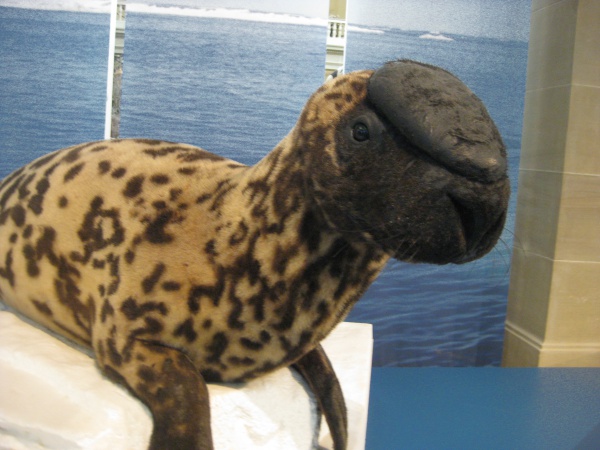Facts About Hooded seal
The hooded seal is a fascinating marine mammal inhabiting the central and western North Atlantic. These large seals are readily identifiable by their silver-grey or white coats adorned with black spots, and the distinctive inflatable bladders on the heads of adult males.
In terms of size, adult male hooded seals are larger than their female counterparts. Males typically measure about 2.6 meters in length and weigh between 300 and 410 kg, whereas females are around 2.03 meters long and weigh between 145 and 300 kg.
Hooded seals prefer the icy waters of the Arctic Ocean and North Atlantic, often frequenting drifting pack ice and deep waters. They are known for their migratory behavior, traveling long distances across these frigid regions.
Their diet is quite diverse, consisting mainly of crustaceans, krill, various types of fish, squid, and other marine creatures. Hooded seals are remarkable divers, capable of plunging to depths exceeding 1,000 meters and remaining underwater for extended periods.
These seals are generally solitary but congregate during breeding and molting seasons. At these times, they can be quite territorial and aggressive. One of the most distinctive features of the males is their inflatable nasal sac, which they use to produce sounds and attract mates.
Breeding occurs in four main areas. Female hooded seals give birth to pups that are about 1 meter long and weigh around 24 kg. The pups experience a very short nursing period of just 4 days, but during this time, they gain weight rapidly thanks to their mother's rich, fatty milk.
Despite their resilience, hooded seals face threats from hunting and accidental capture in fishing gear. To help protect them, conservation efforts have been put in place, including the Marine Mammal Protection Act of 1972, which provides legal protection to these unique animals.
